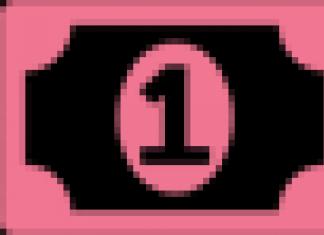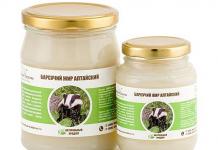Rose is a beautiful and beloved flower by all. She not only decorates the holidays, but also brings joy and pleasure on weekdays, makes them unforgettable. But the life of this beautiful living plant is not so durable. You can solve the problem by learning how to crochet roses according to the pattern. In addition, the appearance of the flower will fully comply with the wishes of the master. Indeed, in different ways of knitting, you can achieve original and unique effects.
Even beginners can crochet roses by mastering the basics and choosing the best way for themselves. There are many patterns and their descriptions, according to which crocheting a rose will be an easy task. It is necessary to complete the elements of the flower and assemble the finished product from them.
Tools and materials that will be required for work:

Before starting work, you need to master knitting an air chain. Then - several types of loops: a column with a crochet, with two crochets and without a crochet.
Flower from ribbon
It is easiest to make a voluminous flower from a knitted ribbon. Having studied the diagram with a step-by-step description, crocheting a rose will be easy. Not only novice craftswomen, but also primary school girls will easily master this master class and cope with the task.
A chain of air loops is knitted. Its length can be determined by an experienced one, based on the volume and size of the future flower, the thickness of the threads. The second row is knitted with single crochets.
If you knit two columns from each air loop, then the tape will turn out to be spiral. This will make it easier to assemble the finished product and the flower will look neater.

You can knit according to this pattern: from even loops, knit one column, from odd ones - two columns without a crochet. The finished tape will tend to curl as well, making assembly very easy.
The flower petals themselves appear in the third row. These are small semicircles or arches running continuously along the entire length of the knitted ribbon. To do this, 7 crochet stitches are knitted from each loop. Moreover, the first and last columns are made with one crochet, and the central five with two.
To make the rose look more voluminous and "deeper", you can start the petals not from the third, but from the fourth or even the fifth row. The finished openwork tape is rolled into a roll. They try to press the base of the petals more tightly, the lower part of the tape. Then they firmly fasten with a thread and hide the knot.
Petal assembly method
 A very interesting method that allows you to get a rosebud of the desired size. After all, individual petals can always be added to an already finished product, making it only better and more attractive.
A very interesting method that allows you to get a rosebud of the desired size. After all, individual petals can always be added to an already finished product, making it only better and more attractive.
You need to make a number of knitted petals, large and small. The crochet pattern and description of the rose is the same for both small and large items. It differs only in the number of rows and the height of the columns:
- 1st row. Cast on 4 air loops and complete a short chain.
- 2nd row. Having made three lifting loops, knit 3 double crochets in each loop.
- 3rd row. Two double crochets are inserted into each loop of the base.
- 4th row. Making an "arch". From every second loop of the base, a chain of four air loops is recruited.
- Thread the end of the thread carefully.
According to this scheme, from 8 to 20 petals of different sizes are made. 5-6 smaller petals are knitted from green threads according to the same pattern. These will be the sepals of the rose.
Collect the petals starting from small ones, securing them with sewing threads. Fold them one by one, evenly and fanly. Having secured the leaves of the bud, apply green blanks at the bottom of the flower. Fasten with threads to match.
Bulk product manufacturing
 In order for the knitted product to really look like a living plant, you need to make a stem and leaves. To do this, take a strong wire for the vertical position of the flower. Cut to the desired length.
In order for the knitted product to really look like a living plant, you need to make a stem and leaves. To do this, take a strong wire for the vertical position of the flower. Cut to the desired length.
One end is bent over with a loop, and the free end is pulled through the center of the finished rose and a wire loop is fixed deep in the bud.
A green thread is tied and fastened on a wire, from which sepals were knitted. Wrap, tightly pressing the turns of the yarn. Knitted green leaves are fixed by placing two rows of turns at the junction for strength.
You can separately strengthen the leaves on a thinner wire and also wrap them with green threads. Then attach them to the stem. This will give the rose on a slender leg grace and sophistication. The position of the leaves can be changed at will. A bouquet of such roses with well-spread green leaves in a tall vase will look beautiful.
Secrets of needlewomen
And yet, for a crocheted rose to become the pride of a craftswoman, just studying the diagrams and describing the process is not enough. You need to carefully observe nature. She will tell you what techniques you need to apply in needlework to make the flowers made truly attractive.
To get a flower that looks like a living rose, you need:
- Be able to correctly select the tone and color of the threads... For example, smaller petals can be more subtle colors. And those located along the edge of the bud are larger in size and richer in color.
- The edge of the petals can also be "tinted" with other tones.... Here, both dark and lighter tones, different from the main one, will look realistic.
- Remember the thickness of the thread... The thicker the yarn for knitting, the voluminous and even loose the finished flower can be. And the thinner and silky the thread, the more delicate and delicate.
Crocheted roses can decorate not only the interior of the room. They will perfectly decorate the wardrobe of a little fashionista: hats and berets, coats and blouses, dresses and sundresses, handbags and hair ties will become individual and unique things. One has only to master this technique, it will be impossible to give up crocheting roses.
There are many things in the world that you can knit with your own hands. It just takes a little experience and patience. The work turns out to be interesting. You can knit not only clothes, but also accessories. One of the most popular additions to clothing is the rose. It is very easy to tie it yourself. If you decide to try your hand at such work, then the main thing is to prepare the material. A crochet rose decorates any look, and the knitting pattern will help you in your work.
This rose can be used not only as an addition to clothes. Attaching an elastic band, you get a hair ornament, it looks gorgeous on a hat, and if you attach it to a sweater, it will turn out to be smart.
Making a bright rose crochet with patterns
Before starting work, you need to remember: the outcome depends on the chosen yarn, hook, knitting density and on the length of the air chain.
Each craftswoman has her own knitting density and completely different flowers can be obtained. The article will describe how to crochet a beautiful and lush rose.
The very first step is knitting a chain of air loops. The length for a voluminous flower is about twenty centimeters.
Second row knitting: two columns, one yarn in one loop, which is separated by three chain stitches. Double columns need to be knitted through one eyelet along an air chain.


Third row: two columns and one yarn, three stitches, two columns and one yarn in each loop of the previous row.


Beginning of the row: seven columns with one crochet in each loop of the previous air row for six loops. Then knit seven columns with two crochets in each air loop of the previous row, until the very end of the row.


Cut and fasten the very end of the thread. We collect the flower from the side where the petals were with one crochet. Spiral wrap and sew.

So sew to the very end, and if necessary, sew on a hair tie. A beautiful flower is pleasing to the eye.

Create a beautiful vase rose
You can make an interesting decoration for a room or give it to a loved one. Crocheting any flower, especially roses, is an activity for stubborn craftswomen who replenish their basket with new works.
You need to prepare yarn of any color. The size of the flower depends on the number of air loops. We need sixty of them in our work.

For further work, a diagram is attached:

After knitting all the steps, you get a spiral.

You can take threads to match, or even a contrasting color is suitable, tie the edges. This will give the rose a more complete look.

Sew the spiral with threads in stages. The result is a flower bud.

A cup must also be tied to the rose. This will help the diagram:

You can add variety in the cup: make one petal small and the other larger.

Now tie the leaves. You can make both large and small (without knitting the last row).


A rose needs a stem. A straight stick will do. If you do not cut off the knots, you can attach the leaves to them. Wrap the stick with green threads.

Having made the stem, we proceed to fixing the cup. You need to put it a little on the stalk itself so that the cup holds better, and sew it on. We also sew on the leaves.

We attach the bud to the cup and the gift is complete. You can make a bouquet of these roses and please someone. The flowers are very natural and natural.

Volumetric rose for beginners with a description
You can create a very sophisticated and sophisticated rose. Before starting work, you need to study the diagrams:

Using the first scheme, make three petals. We make the very first circle of loops tightly so that the hole is practically closed. Hide the initial thread, and make the one that remains long at the end. A rose will be attached to it.

Tie three petals according to the second scheme:

Tie four more petals according to the scheme number four.

And according to the fifth scheme, it is necessary to tie five petals.

The third scheme was created for the bud, to which all the petals will be attached. In it, the beginning of air loops (the ring itself) should be loose, so that later you can insert the stalk. Fill the bud with padding polyester.

It was the turn of the petals to be sewn. Where there is a hole in the bud, it should be at the bottom. You need to sew in layers, based on the volume of the petals. You need to sew them in halves: half of the first petal, half of the second. Sew the remaining half from the first petal onto the second. Thus, sew on all three petals. It should look similar to the picture:

The attachment of the remaining petals is the same. You need to look to see if the petals fit neatly, try them on.

Let's move on to creating the leaves and stem. Cut two small pieces of wire and one larger. Tie the leaves according to the already familiar pattern from the previous master class: two large, four small. Wrap small pieces of wire with green tape, and when a large wire is wrapped, then attach these wires crosswise to it.

Glue the leaves on the tips. Tie the sepal and assemble the work.

Glue a couple of beads to create dew.

Related videos
For beginner craftswomen, it is better to use a video tutorial. They will describe the most basic knitting steps, and for ideas you can use a variety of videos.
Good afternoon, today I will tell you what are the ways to crochet a rose. You will see how easy it really is - even for beginners, and even for children in their first year of crocheting... All flowers are knitted very simply. In the article you can find many patterns for knitted flowers. And in this article there will be schemes and lessons for crocheting a rose - in a bud or in full bloom. Immediately, all techniques and methods will become clear and easy to follow for you.
So let's get started.
How to crochet a rose.
STRAIGHT LACE method.
These are the roses we are going to knit now. And this work is suitable for the very beginning crochet masters - for children of primary school age. That is, the master class is suitable for the leaders of the "Skillful Hands" children's circles.
It is enough to learn how to knit - a chain of airs, to master a single crochet and a double crochet.
You can crochet these roses to decorate a greeting card. Nice craft for my mother's holiday on March 8th. Or decorate a hair tie with a rose. Or crochet a gift basket, starch and decorate with a rose, as in the photo below.


Your crocheted lace ribbon doesn't have to be straight- it can twist itself into a spiral, or a circle. So even better.
This will happen by itself if you are in the second row (the row that immediately goes over the air loops) to knit more than one column in one air loop - but more. Either in each air 2 columns, or through 1 air 2 columns, or through 2 air. The more often you make the extra extra column, the more your lace twists.... And then it will be easier to crochet the rose into a flower.

You can knit a simple lace strip with holes: 1 column + 1 air, 1 column + 1 air, etc. By itself, this row will be straight in shape. But he begins to twist into a spiral when the next in the third row, in each hole of the lace, we will knit many double crochets (in this case, 6 columns in each arch - along the edges with one crochet, and 4 central ones with two crochets)

And if you make in such lace more rows up- and as a result you get a wide strip of lace, you can fold more curvy crochet roses, as in the photo below. Additional rows - will give the rose the depth of the petals. You can crochet such a rose on a strong wire leg, tie green oval leaves with it and collect a beautiful knitted bouquet for a vase.

The essence of the whole work is simple - we knit an already wide lace ribbon with the edge in the form of rounded arcs. And then we twist this lace with a roll. It turns out a rose. The green part can be immediately included in the ribbon knitting pattern. That is, start knitting a green ribbon and only then continue with red threads.

You must understand one thing. Knitting pattern for such lace can be arbitrary... YOU can take this diagram - how piece from the scheme of any round napkin. Here, take a round knitting pattern and erase the extra rows there - what remains can serve as a rose pattern.
This is = a piece of a regular napkin chart. But if we tie it like a ribbon. And roll it into a roll, we get a crochet rose.

Here in the photo below is a rose and a diagram - also similar to part of a napkin diagram.

And even a straight (not round) lace pattern can become a rose when rolled into a roll. The main thing is that this straight lace has a WAVY EDGE. So that when rolled into a roll, these semicircular edges look like petals.
In the photo and diagram below, we just see a crocheted rose, knitted from a straight ribbon of wide lace.

Rose with petals of different widths.
You can also make each arch-petal on your lace ribbon A LITTLE MORE than the previous one. Then your marginal rose petals will be larger and wider than the central inner petals of the bud.
This is how it was done on the rose with the photo below. And the diagram shows this principle too. The petals contain more and more columns.

Crochet rose on a green shamrock.
Below we see small roses that lie on green leaves. The rose itself is knitted simply (diagram below).

The green shamrock knitting is pretty simple too. First, we knit a chain of 7 loops, one for lifting and along this chain we return back with connecting posts. And now, having returned, we make another chain of 7 air balloons and again unfold from its tip and walk back along it with a row of connecting posts (crosses in the diagram). And when we return, we make another, third, chain of 7 air balloons - in total we return along it with a row of connecting posts. And then we tie each of the three sticks with columns with one and two crochets (as shown in the diagram). When all three leaves are knitted - they can be decorated - add a strapping of cloves (red row in the diagram below).

Of course, nothing prevents us from tying each leaf separately, and then collecting them into a treelist. And the layout of the leaf can be completely different.
For example like this. Everything is up to your taste and design. And here is a diagram of a beautiful leaf with a jagged edge for a crochet rose.

And you can do even more interesting. You can knit a trefoil (or a multileaf, it doesn't matter) directly on the same chain on which we knitted a twist of petals. As we can see in the photo below.

A rose made in this technique can become an applique decoration for a children's knitted hat (as in the photo below).

Petal method
Crochet a rose.
But these roses are made from individual round petals. Look carefully, you can see it perfectly in the photo.


Below you can see a crocheted rose which consists of round petals. Like a living rose in nature. To twist such a rose, you need to knit several round petals. It is desirable that the petals be of two or three different shades of red. So the rose will turn out dark in the middle of the bud and will gradually brighten towards its edges - and look like natural.

Here is a diagram below where we see how each petal of such a rose is crocheted. There is also a sepal diagram (pentagonal diagram in the picture below). And how the leaf is tied.
And also a knitting and folding pattern for a folded bud is given - an asymmetrical circle in the lower left corner of the figure below.

In this technique of round petals, you can make large roses. The petals can be curled around the edges or straight, the buds can be closed or curvy, depending on how you wrap the rose flower.


If on the last rows of the circle you make a decrease in loops in a row. Then the edges of such round petals will wrap by themselves. And we get rounded, even cuffs-folds on each rose petal. As in the photo below.

You can also make your own design additions to this technique of knitting roses. For example use threads of two or three colors in (as in the left photo below), where border each petal is tied first with columns of pink threads, and then one more circle with columns of red threads.
And also (as in the right photo below) you can add in the middle of each round petal - sharp notch... This shape of the petals is found on some varieties of roses. Why not crochet it.

These are the recommendations for creating a crochet rose I can give. All methods and all patterns of knitting roses - fit in just 2 techniques. Either it is a long lace, which was then twisted into a rose, or it is round petals, which were then collected into a rose. Bowls and green leaves can be knitted in different ways and patterns. Everything is up to you.
Choose the technique that is closer to you and create your own crochet rose.
Good luck with your work.
Olga Klishevskaya, specially for the site.
If you wish, you can knit anything you want, from accessories to warm clothes. What about garment decorations? After all, clothes decorated in this way look interesting, attractive and unique. So how can you decorate it? Here is one of the options - a rose. Crocheting this flower is a quick and easy process, having familiarized yourself with the scheme, even a beginner can knit it.
A beautiful knitted rose can be used as a decoration for a hat, cap, headband, scarf, brooches, hairpins, and even just for room decor. And you can make a pot of flowers like this:

Here is the knitting pattern for this flower:

For work you will need:
- Cotton yarn (25 g / 130 m) in orange, red, cream and hot pink;
- Hook number 1;
- Artificial stems.
Crochet roses: job description
To tie a pestle, you need to tie a chain of 6 air loops (cn) and connect into a connecting ring (cn). Each new row needs to start 3 VP, and end cn in the first VP.
1: 9 single crochet (sat / n).
2: in each loop, knit 2 double crochets (ss / n).
Crocheting a rose may seem daunting, but once you try it, you'll know it's simple.
For petals No. 1, knit in the eighteenth loop of the fifth row of the pistil:
1: knit 2 ss / n in every 3 sts. You should get 24 cc / n.
2 and 3: knit according to pattern 1, repeat the rapport 4 times.
For petals number 2, knit in the eighteenth loop of the fourth row of the pistil:
1: 2 cc / n in one loop of the base, 2 cc / n in one loop of the base, 1 cc / n, knit until 30 cc / n. Then knit three rows according to scheme 2, repeat the rapport 5 times.
For petals number 3, knit in the eighteenth loop of the third row of the pistil:
1: knit 2 ss / n in each loop, you should get 36 ss / n. Then knit 4 rows in 3 patterns, repeat the rapport 6 times.
For petals No. 2, knit in the eighteenth loop of the second row of the pistil, shifting the first petal to the right by three loops so that the petals of this row are between petals No. 3.
1: knit 2 ss / n in each loop, you should get 36 ss / n. Then 6 rows in 4 patterns, repeat the rapport 6 times.
Tie two flowers of each color. Bend the petals up and starch. Fasten them to the stems.
You can crochet not only roses, but also other, unusually beautiful flowers. To connect them, you just need to carefully consider the scheme and follow it.
Knitting patterns are presented below:










Strictly following the chosen scheme, the flower will definitely turn out. You can try to knit without a scheme, showing imagination, and maybe you will get a new, extraordinary and unique flower. Well, if you can't knit according to the pattern or on your own, then you can watch a video lesson that will definitely help you knit a flower.
Related videos
You always want to diversify warm knitted clothes with something unusual. You can add a touch of spring-summer mood by decorating your clothes with flowers. They, of course, will not smell like a real flower, but they will not yield to a living plant in beauty. How to crochet roses? You will learn about this from our material.
The basics of knitting for beginners
The first thing you need to crochet a rose is a diagram and description. And here small problems may arise for novice craftswomen. The diagram is, of course, good, but you still need to be able to read it. In fact, there is nothing complicated about this, because almost all images have footnotes indicating what this or that symbol means. These are the most commonly used abbreviations:
- VP - air loop;
- CCH - double crochet;
- RLS - single crochet;
- SP - a slip stitch or a closing loop;
- PBN - half double knitting or half-crochet without crochet.
Thus, it is enough just to know how certain loops are knitted, and everything else is a matter of technique and skill. You can learn more about how to crochet a rose for beginners from the master classes below.
Openwork queen of flowers
Creating openwork jewelry is a real magic. The amazing thing about this process is that you won't be able to appreciate the beauty of the flower until you've finished knitting. However, do not worry: you will succeed, but how to crochet a rose, this lesson will tell you with a step-by-step description and a photo.

Necessary materials:
- hook 5 mm;
- pink worsted yarn;
- green worsted yarn;
- a needle with a large eye;
- scissors.
Process description:

We knit together: a rose for decorating shawls, hats and stoles
If you have been crocheting for several years already, then surely there are many knitted things in your wardrobe. Undoubtedly, there will be those who, in your opinion, are missing something. Try decorating them with flowers. For example, a crocheted voluminous rose has a fairly simple work pattern.




































